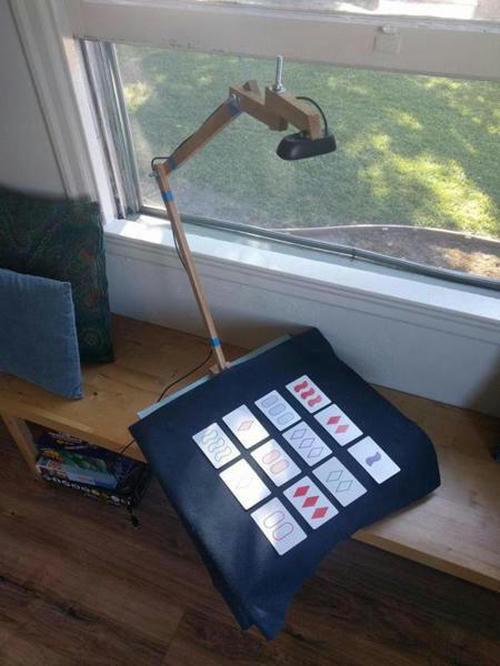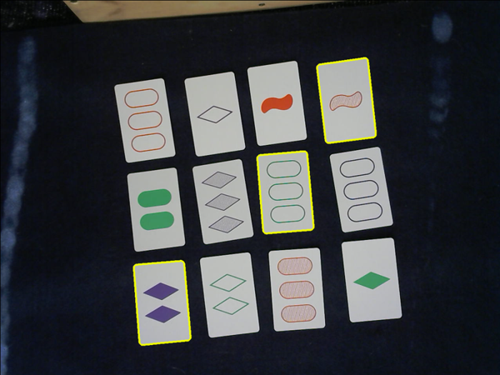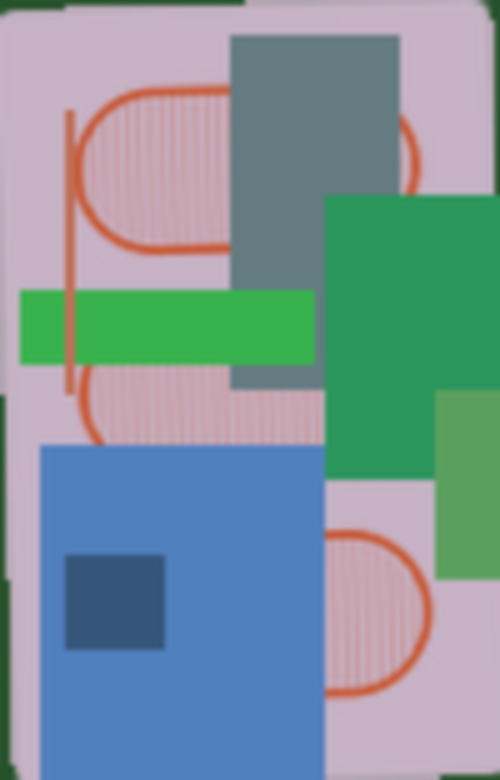oakmachine / projects / setbot
2016-03-13
I've been working on a computer vision system that can play the card game Set. It recently beat a human! (Though it was a close game..) If you want to read more about the pipeline and see the code, the github repo is here.

- an overhead webcam watches the game
- a "white isolation" technique finds all the cards
- each card is sent to a keras-based convolutional neural network that was trained on about 200k cards -- the classifier reports the cards characteristics
- once the board is understood, setbot picks three card combos and checks if they are sets
- all identified sets have an attached probability (based on the classifier's confidence in card-identification), so, in the typical game play mode, it outputs only the "most likely" set, for example:

image recognition with OpenCV
- I converted the webcam image to HSV space and set thresholding ranges to find bright white contours -- I tried HSL but had no luck for reasons I can't remember
- this post on playing 24 was very helpful -- I used a lot of similar techniques
the classifier
- I'm still learning about designing these things so I used a CNN topology from some keras docs -- there are four convolution layers and two max pooling layers. The full model image is here:

- there is dropout but no regularization
- I used the Adam optimizer but didn't find it to be drastically better than SGD
- this gets to about 90% accuracy in training and seems about as accurate with real life images
- I found some weird inconsistencies with keras -- increasing the size of the validation set would make my model stop converging during training..which makes no sense. So I think there is some weird instability there -- I'll probably look to vanilla tensorflow from now on. Though keras was rapidly getting updates as I was using it, so it may be fine now.
- the keras-based code is here
- I trained on an 8 core digital ocean box (CPU only, unfortunately) -- though once I started using a generator to feed in the training batches, I was only using about 4GB of memory so I could've downgraded
image generation
- the synthetic images were fun to make -- here is one of them,
a particuarly obscured variant of
3-red-striped-oval:

- the code to generate the vanilla SVG cards is here
- and the code to mutate these cards to create a large number of variants is here
- I originally used 50 x 78px images but found that I was losing color info and having a hard time discriminating between, like, green and purple empty shapes. So I went up to 100 x 156px images at the expense of training time.
next up
- demo video or something..
- actuators to slap the cards? there was talk of pneumatics, robot arms, mousetrap-like things..
- maker faire?
- better performance in verbose mode (aka trashtalk mode)
- an app
- a website?